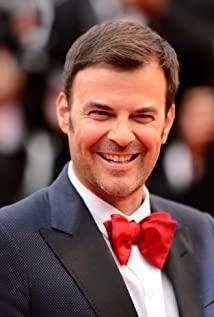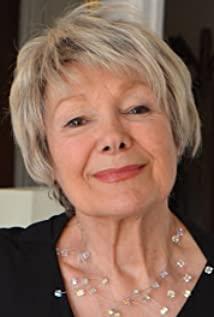(Peach Blossom Island Film Group Competition in August)
Francois Ozon's images have always been stylistic conspiracy, magical and unique. The most thorough analysis of his works is the various observations from the perspective of psychoanalysis. In fact, Ou Rong's works are so expressive that the film is forced to act as a green leaf, an analysis of images. It is impossible to escape Ou Rong's own temperament, and "Family of Lost Souls", as the debut novel, is the natural best interpretation of Ou Rong.
What makes this film unforgettable for viewers is always the bizarre desires in the middle. These images are undoubtedly Ou Rong's complete understanding of desire, but the images also interfere with Ou Rong's expression. The state of the idea manifests itself in every corner of the image. Just as Bazin had high hopes for the image of Jacques Tati, who claimed that M. Hulot was subordinate to a chaotic metaphysics, so the image of François Ozon, rising from the legacy of the New Wave, should be labelled as such: a desire metaphysical .
Desire and image are natural enemies, often intertwined in a strange posture. Desire will not be image, and image will not be desire. For director Ou Rong, who is very expressive, the key is to find an outlet in this topologically entangled chaos. In his first feature film debut, director Ou Rong successfully found the exit in two different categories: time and space.
In "Family of Lost Souls", time is in a stagnant state, and the relationship between events is not as clear as we think. It is more of a vertical drop, dropping all relationships in On an empty item, let them interact and solidify the rift at the same time. Here, the only thing that has a clear direction is the time transition that Ou Rong keeps giving. The span is in months, but it is not clear how many months it is.
Only at the end can the viewer suddenly realize that the time in this film is not really a unit of length or sequence, and its dimension is no longer a single straight line. Ou Rong reversed time, he completely changed the material and scope of time, he flattened the time axis, interrupted a kind of straight line progression, and began to jump on this flattened straight line.
In other words, Ou Rong's time can no longer be measured, and a few months before and after are just a ridiculous joke. In the time trap that Ou Rong deliberately created, the translation-like movements were flattened and crushed, and everything became vertical. The fall of the time, the change of time is remembered in the dream, but it falls to the reality in an instant. In the end, the time and space of the lost soul family becomes a point where everything happens at the same time, ends at the same time, and falls at the same time .
The best proof of this idea is his father's desire to kill. At the beginning of the video, Ou Rong shows his father's killing, which is completely recognized by the audience psychologically and regarded as an inevitable event. , but in the actual progress of the film, when the images in the house were excavated, the viewer discovered that his father's beheading was actually just a phantom dream.
A sense of confusion is unavoidable, since a dream cannot be presented as a spatiotemporal order in any way. Then, the occurrence of this scene will inevitably break the barrier of time, and we cannot define the time of the dream's existence by the time when the dream is generated, especially when this kind of time is deliberately priced by Ou Rong.
In order to eliminate this sense of confusion, the viewer has to actively participate in Ou Rong's degradation of time. In fact, the beheading did happen in an instant. Another example is the conversation between the mother and the psychiatrist. The actual incestuous act is hidden in the dream. Here, the mother is not in the psychological counseling room reviewing the past. Here Incest falls vertically from her words, and the entire conversation that appears to take place in the future is just a footnote to this drop.
The processing of time obviously stems from Ou Rong's own clear understanding of his image state. He intentionally creates a nightmare-like circling, and the time and space of a dream state cannot be observed and measured, and a vertical fall may be the Such a regular transformation of space-time. The setting of time is obviously based on the understanding of the dream field, which has also appeared in Ou Rong's later films, but it is far less intuitive than "Family of Lost Souls".
However, the setting of space is indeed an important symbol of Ou Rong's images. Ou Rong is very concerned about the limitations of his space, which is naturally due to his abundant desire for expression. In Rong's films, the characters are mostly thrown into an extremely small space, where they are forced to react. This is not necessarily contrary to the pioneering and extensibility of the image itself. When Ou Rong took the initiative to declare the attributes of his images to the audience and actively divide the area, he has actually made adjustments to the space of his images, and the audience no longer needs to Knowing that the actor came from nowhere, they just need to know what the actor will experience here.
The best embodiment of this concept is the solemn house in the opening scene of Lost Soul Family. Ou Rong tells the audience in an extremely restrained way: everything you imagine is happening, but the field that the image is involved in will not cross. this house .
In addition, the dramatic curtain at the beginning of the film is also intended to emphasize the plasticity of the space he shows. It is a fairly intuitive setting. Here, people and houses are placed in the foreground, and all the places beyond the reach of images are was ruthlessly abandoned.
So when we look back at our father's dream beheading again, we find something different. We have every reason to believe that the beheading of our father did not happen in a dream. His beheading actually happened. He did kill his family. Because of the limitations of Ou Rong space, a kind of purification and treatment cannot happen here. Outside the house, they never really leave, and the family's peaceful floating on the water is nothing more than a mimesis of death , and the beheading happens at the same time as the healing.
After death, that is, after the end of the treatment, they began to launch the final attack on the father.
So far, we can find that the time and space dimensions in Ou Rong's films have been dismembered and reorganized a lot. Many are regarded as an installation, a space of Ou Rong's desires, where desires can happen at will and only responsible for Ou Rong himself. In other words, here is a very intuitive expression of Ou Rong's own desires, rather than a consensus.
But what cannot be ignored is that images must once again enter into the imaging format of desire. Even if Ou Rong is already very familiar with and familiar with the nature of his images, he is very responsible to actively express these characteristics, but the desire in images will always be It can't be intuitive, and the viewer can't really get a glimpse of Ou Rong's own desires at all. In the change of images, desire will inevitably move towards idealization and become a kind of metaphysical desire.
The viewer of such desire needs to maintain a high degree of attention, because it is no longer an image realization of desire, but an image display of a sublime object to be considered . In "Family of Lost Souls", Ou Rong's strength is just right, and lust is shown in an elegant way.
This is different from Ou Rong's previous short film creation. The increasingly enhanced image influence of feature films interfered with his creation and forced him to restrain himself. Therefore, although the erotic scenes in this film are surprising, this surprise comes more from the idea Sexual confusion, not any stimulation of the erotic scene itself.
Therefore, the viewer must realize that even though Ou Rong devoted a lot of desire to express in this film, the image limited him and made his desire become an object under observation, a kind of Kantian innocence. Aesthetic objects of interest.
Then, Ou Rong's desire can no longer be criticized, and "Family Lost Soul" is by no means an attempt to show a judgment and evaluation of desire, its purpose is only to present. Desires are embedded in the film as a phenomenon. It is difficult for us to really think about where the images are pointing back. Such thinking will only make people shudder. All we can think about is the fact that these desires exist .
The restricted female body, homosexuality presented as an object of desire, incest and arrogance, necrophilia, voyeurism, beheading in dreams, the gaze of patriarchy. These elements are thrown at random, and we can't think about where these desires come from, because their origins are erased by images, and it is difficult for us to really know the properties of these desires, but it can be approximated, just as we do not know at all. We may really know the true ability of this mouse from nowhere and why it can change people. We can only deliberately make assumptions and guesses.
In "Family of Lost Souls", the relationship between a large number of characters and mirrors is also constantly confirming this feature. People can always be regarded as a kind of intuition that can be observed, but only people in the mirror can become an idealized objective, and only images can transform this metaphysical idea into eternal solemnity.
,
View more about Sitcom reviews










